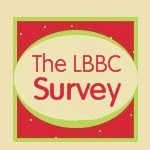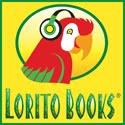
Yesterday, I introduced you to our choice for June's Libro del Mes,
Diego Rivera, His World and Ours. Today, I am happy to share with you a short interview with the author and illustrator, Duncan Tinotiuh. Duncan recently published his first two children's books:
Diego Rivera and
Dear Primo: A Letter to My Cousin. His illustrations of the AH1N1 in Mexico were selected to be a part of CONACULTA's catalog of Mexican illustrators for children and young adults. They also appeared in the BBC when the pandemic broke out.
Take a moment to get to know Duncan and the inspiration behind his books...
You've recently published your first two children's books. When did you realize you wanted to be an illustrator? A writer?
I’ve liked drawing and making up stories since I was a kid. I did it through elementary school, middle school and high school, whether it was making my own comic books, drawing cartoons of my classmates or painting on canvas. In college, I studied writing, illustration, and also photography.
For my senior thesis at Parsons I wrote and illustrated a short graphic novel about an undocumented indigenous Mexican worker. While doing that project I developed my current illustration style.
A professor that really liked my work introduced me to an editor at Abrams. That is how the door to write and illustrate children’s books opened.
I really love making picture books. It brings together two passions of mine. I’ve been passionate about making images and telling stories since I was kid.
What is the creation process like? Do you prefer a particular medium?
My process starts with an idea. With Dear Primo I had the idea of two cousins that send letters to each other. With Diego Rivera: His World and Ours it began with a question: What would Diego Rivera paint today?
The next step is giving that idea a form. I write a draft for the book. My first draft is usually pretty bad. But after several revisions it begins to take shape. Once I have a working draft I start to draw. I attempt to make books where the text and the images compliment and work off of each other.
The next step is making a dummy of the whole book. But if the dummy doesn’t feel ready yet I let it sit, sometimes for months. At some point I get a new insight, I think of the book or the idea in a new light and try to give it form again. Once I have a strong dummy I start to put the color and textures in.
In your books, your work is a dynamic combination of photographs and illustration. How did you develop your artistic style?
My artwork is very much inspired by Pre-Columbian art. I try to have a strong sense of geometry in my images. My characters are almost always drawn in profile like they are in Pre-Columbian codex and I borrow a lot of motifs from those codex.
I do not want to simply copy or mimic Pre-Columbian art though. Using Photoshop to collage into my images made my artwork feel more my own, it also made it feel more contemporary and relevant to our digital age.
Where do you find your inspiration for your books?
I am both a Mexican and American citizen. I feel a responsibility to address issues that concern both Mexico and the US.
I am fascinated by Mexican art and folklore. I find it very inspiring and in my books I try to showcase it and re-interpret it.
Which artists have influenced you the most? Which ones do you admire?
As a kid, I loved comic books and Japanese animation. As a teenager, I liked artists like Van Gogh and Egon Schiele. These last years I’ve really grown to love and appreciate indigenous and naïf art. I like ancient Mexican art specially. I like that the color and the design of the image is much more important than the realism of it.
I like Diego Rivera very much. He was also very inspired by Pre-Columbian art. He took elements from that art, like the geometry and monumentality of it, but he made it his own and relevant to his time.
In terms of writers, I like authors that are sophisticated and accessible at the same time. I like authors that are enjoyed and appreciated by PhDs and middle-schoolers alike. Among my favorite authors are Juan Rulfo, Junot Diaz, and Mark Twain.
Both books focus on contrasts - old vs. new, city vs. country - and present them in a way that shows the similarities as well as differences. What is your goal? What do you want the reader to get out of your story?
More than anything I want the reader to realize that we humans at our core are more alike then different. We may live in different places or may have grown up in a different time, but we all go through similar struggles and find happiness in similar things. Family and fun are important to all of us.
Do you have any new books coming out any time soon?
I am working on several dummies. And I will be doing a new picture book with Abrams, but there is no release date yet.
You can learn more about Duncan Tinotiuh by visiting his multilingual website,
http://www.duncantonatiuh.com/




























